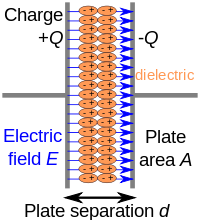
Multiparameter mapping of relaxation (R1, R2*), proton density and magnetization transfer saturation at 3 T: A multicenter dual‐vendor reproducibility and repeatability study
Sign Up to like & getrecommendations! Published in 2020 at "Human Brain Mapping"
DOI: 10.1002/hbm.25122
Abstract: Multicenter clinical and quantitative magnetic resonance imaging (qMRI) studies require a high degree of reproducibility across different sites and scanner manufacturers, as well as time points. We therefore implemented a multiparameter mapping (MPM) protocol based… read more here.
Keywords: magnetization transfer; repeatability; reproducibility; multiparameter mapping ... See more keywords

Editorial for “Quantitative Magnetization Transfer Detects Renal Fibrosis in Murine Kidneys With Renal Artery Stenosis”
Sign Up to like & getrecommendations! Published in 2020 at "Journal of Magnetic Resonance Imaging"
DOI: 10.1002/jmri.27388
Abstract: Renal fibrosis may start and silently progress for a long time before there are indications of kidney disease. Loss of peritubular capillaries and impaired oxygen diffusion due to fibrosis result in hypoxia and excessive inflammatory… read more here.
Keywords: renal artery; magnetization transfer; fibrosis; renal fibrosis ... See more keywords

Magnetization transfer from inhomogeneously broadened lines (ihMT): Improved imaging strategy for spinal cord applications
Sign Up to like & getrecommendations! Published in 2017 at "Magnetic Resonance in Medicine"
DOI: 10.1002/mrm.26134
Abstract: Inhomogeneous magnetization transfer (ihMT) shows great promise for specific imaging of myelinated tissues. Whereas the ihMT technique has been previously applied in brain applications, the current report presents a strategy for cervical spinal cord (SC)… read more here.
Keywords: strategy; magnetization transfer; spinal cord;

Quantitative and textural analysis of magnetization transfer and diffusion images in the early detection of brain metastases
Sign Up to like & getrecommendations! Published in 2017 at "Magnetic Resonance in Medicine"
DOI: 10.1002/mrm.26257
Abstract: The sensitivity of the magnetization transfer ratio (MTR) and apparent diffusion coefficient (ADC) for early detection of brain metastases was investigated in mice and humans. read more here.
Keywords: early detection; detection brain; brain metastases; magnetization transfer ... See more keywords

Chemical Shift magnetization transfer magnetic resonance imaging
Sign Up to like & getrecommendations! Published in 2017 at "Magnetic Resonance in Medicine"
DOI: 10.1002/mrm.26383
Abstract: The purpose of this work was to develop a chemical shift magnetization transfer (CSMT) magnetic resonance imaging (MRI) method to provide accurate magnetization transfer ratio (MTR) measurements in the presence of fat. read more here.
Keywords: magnetic resonance; magnetization transfer; chemical shift;

In vivo measurement of a new source of contrast, the dipolar relaxation time, T1D, using a modified inhomogeneous magnetization transfer (ihMT) sequence
Sign Up to like & getrecommendations! Published in 2017 at "Magnetic Resonance in Medicine"
DOI: 10.1002/mrm.26523
Abstract: This paper describes a technique that can be used in vivo to measure the dipolar relaxation time, T1D, of macromolecular protons contributing to magnetization transfer (MT) in tissues and to produce quantitative T1D maps. read more here.
Keywords: time t1d; relaxation time; dipolar relaxation; magnetization transfer ... See more keywords

B1‐sensitivity analysis of quantitative magnetization transfer imaging
Sign Up to like & getrecommendations! Published in 2018 at "Magnetic Resonance in Medicine"
DOI: 10.1002/mrm.26673
Abstract: To evaluate the sensitivity of quantitative magnetization transfer (qMT) fitted parameters to B1 inaccuracies, focusing on the difference between two categories of T1 mapping techniques: B1‐independent and B1‐dependent. read more here.
Keywords: quantitative magnetization; magnetization transfer; sensitivity analysis;

Microstructural correlates of 3D steady‐state inhomogeneous magnetization transfer (ihMT) in the human brain white matter assessed by myelin water imaging and diffusion tensor imaging
Sign Up to like & getrecommendations! Published in 2018 at "Magnetic Resonance in Medicine"
DOI: 10.1002/mrm.27211
Abstract: To compare the recently introduced inhomogeneous magnetization transfer (ihMT) technique with more established MRI techniques including myelin water imaging (MWI) and diffusion tensor imaging (DTI), and to evaluate the microstructural attributes correlating with this new… read more here.
Keywords: magnetization transfer; water imaging; inhomogeneous magnetization; transfer ihmt ... See more keywords

Sensitivity regularization of the Cramér‐Rao lower bound to minimize B1 nonuniformity effects in quantitative magnetization transfer imaging
Sign Up to like & getrecommendations! Published in 2018 at "Magnetic Resonance in Medicine"
DOI: 10.1002/mrm.27337
Abstract: To develop and validate a regularization approach of optimizing B1 insensitivity of the quantitative magnetization transfer (qMT) pool‐size ratio (F). read more here.
Keywords: quantitative magnetization; sensitivity regularization; magnetization transfer;

Background suppressed magnetization transfer MRI
Sign Up to like & getrecommendations! Published in 2019 at "Magnetic Resonance in Medicine"
DOI: 10.1002/mrm.27978
Abstract: Up to 30% of the hydrogen atoms in brain tissue are part of molecules (“semisolids”) other than water. In MRI, their magnetization is typically not observed directly, but can influence the water magnetization through magnetization… read more here.
Keywords: magnetization transfer; suppressed magnetization; mri; background suppressed ... See more keywords

Demonstration of magnetization transfer and relaxation normalized pH‐specific pulse‐amide proton transfer imaging in an animal model of acute stroke
Sign Up to like & getrecommendations! Published in 2020 at "Magnetic Resonance in Medicine"
DOI: 10.1002/mrm.28223
Abstract: pH‐weighted amide proton transfer (APT) MRI is promising to serve as a new surrogate metabolic imaging biomarker for refined ischemic tissue demarcation. APT MRI with pulse‐RF irradiation (pulse‐APT) is an alternative to the routine continuous… read more here.
Keywords: magnetization transfer; amide proton; transfer relaxation; apt mri ... See more keywords